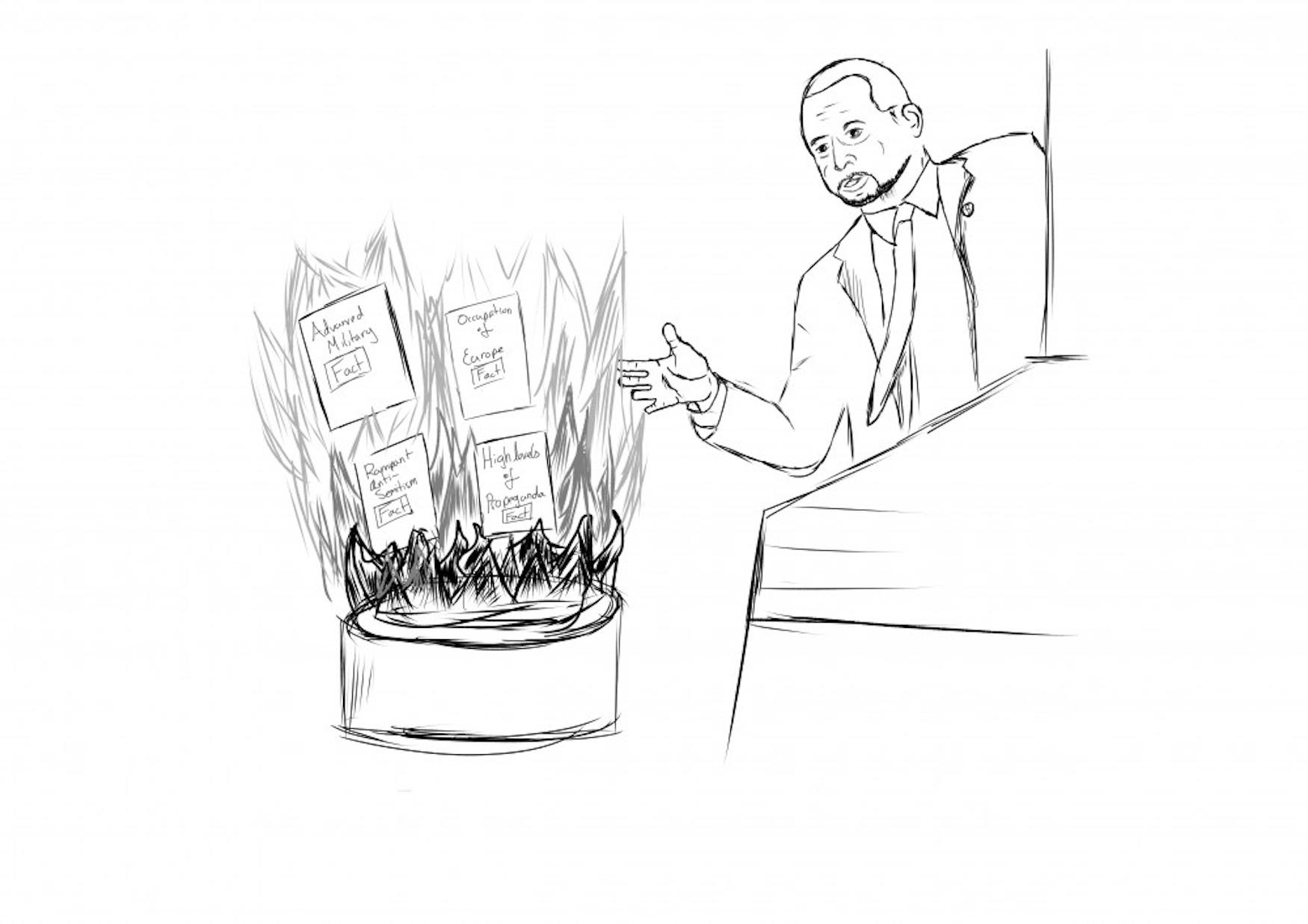Criticize Carson’s misguided Holocaust comments
Republican presidential candidate Dr. Ben Carson, a former neurosurgeon and 2016 candidate for president of the United States, caused an uproar recently when he claimed that gun control measures played a major role in the extermination of six million Jews during the Holocaust.
“I think the likelihood of Hitler being able to accomplish his goals would have been greatly diminished if the people had been armed,” said Carson in an interview with CNN’s Wolf Blitzer on Oct. 8.
The statement has been widely derided by the established Jewish community, including the Anti-Defamation League. Holocaust scholars have rightly pointed out that the argument hyperbolizes what was a relatively insignificant factor in the systematic persecution of minorities in Nazi Germany.
In his recently published book “A Perfect Union,” Carson writes that Nazis were able to accomplish their goals “through a combination of removing guns and disseminating deceitful propaganda.” The insinuation that confiscating guns was of comparable significance to the use of propaganda has never appeared in any “serious work of scholarship on the Nazi dictatorship,” according to Holocaust scholar Alan Steinweis. As ADL director Jonathan Greenblatt noted in response to Carson, propaganda and widespread anti-semitism was the preeminent cause of the genocide.
According to the National Review, gun legislation enacted in 1938 prevented Jews from working in the firearm industry and banned the ownership of certain types of ammunition. Even so, the law did not entirely take guns out of the hands of the Jewish population. One of the most iconic events of World War II was the Warsaw Ghetto Uprising, when around 750 Jews organized themselves into a self-defense unit to resist deportation to death camps. The resistance succeeded in turning what was supposed to be a three-day liquidation of the ghetto into a month-long battle before finally succumbing to a German force of 2,000. Their resistance inspired similar uprisings in other ghettos and death camps across Europe. However, as many scholars have pointed out, such attempts were never going to be anything more than symbolic.
According to Time Magazine, there were approximately 200,000 Jews under the control of Germany in 1938. The idea that an untrained group of that size could have overthrown an army which successfully conquered much of Europe is preposterous. Interestingly enough, not even Carson or those who agree with him have gone so far as to say that such a rebellion would have been possible. Rather, Carson says that the chance of Hitler succeeding would have been “greatly diminished.” Dr. Keith Ablow of Fox News backed up Carson’s obscure claim in an op-ed, saying that when Jews were stripped of the right to own guns, “they surrendered the demonstrated intention, at all costs, to resist being deprived of liberty.”
The question then becomes why Dr. Carson and others are so fixated by a solution which they admit would have only allowed European Jews to symbolically resist. The reason lies in the fact that the Republican party is clambering for historical examples to show positive aspects of lax gun regulations in developed countries. Few exist in a world where countries with the highest rates of gun ownership also have the highest number of deaths by gun. The United States has had 10,734 fatalities resulting from gun violence this year. We have nearly 30 times the number of per capita gun murders as the United Kingdom, which has far stricter gun laws, according to the BBC.
Perhaps another reason for such backward thinking on the part of Carson and his ideological contemporaries is that the real solution to saving Jews during the Holocaust is inconsistent with another aspect of their political ideology.
In 1938, thirty-two countries met in Evian, France to discuss a solution for saving European Jewry. The discussion did not center around arming Jews under Germany’s control. It dealt with the only logical solution for how to save them: immigration.
In response to the conference, the German government stated that it would allow for Jews to be transported to other countries if they agreed to take them in, according to Ronnie Landau, author of “The Nazi Holocaust.” However, that never happened.
Most countries that attended the conference, including the United States and Great Britain, refused to take in more refugees. The Wagner-Rogers Bill of 1939 would have admitted 20,000 Jewish refugee children into the United States, but Congressmen were dissuaded from supporting the legislation by anti-immigration groups who claimed that an influx of refugees who required government services would serve to deprive American children of aid.
According to the United States Holocaust Memorial Museum, our country’s reluctance to take in Jewish refugees was inspired by longstanding xenophobia in the early 20th century. Anti-immigrant sentiments were often manifested in newspaper and magazine cartoons which perpetuated stereotypes. Already-existing immigration quotas established in 1924 targeted immigrants of certain ethnicities.
Ironically, the same sentiments still thrive among American conservatives, and have manifested themselves in especially ugly forms during the current election season. While Carson says he supports establishing a guest-worker program as an alternative to deporting illegal immigrants, he has joined his contemporary Donald Trump in expressing the need to deter illegal immigration through increased border security.
There are many lessons that policymakers should glean from the Holocaust, but how to construct gun policy certainly is not one of them. Carson’s comments insult the memories of those who perished in the Holocaust whose fates are being used to push irrelevant political agendas. If Carson truly wants the lessons of the Holocaust to influence his ideology, he will make a point of pushing back against the xenophobia of his party and preach acceptance of those who come from different backgrounds.



Please note All comments are eligible for publication in The Justice.